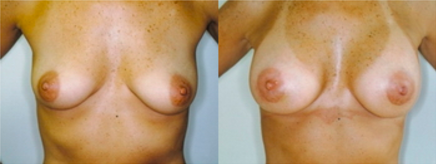How Durable Are Breast Implants?
Although the breast implant scare happened more than twenty years ago, many women are still concerned about the safety and durability of breast implants today. Could mammograms cause them to rupture? What kind of temperatures and environments can they actually withstand? This article will help explore the durability of some of the latest implants on the market.
 What Is the Concern?
What Is the Concern?
If an implant ruptures, the saline or silicone gel filling can leak into the body. However, the saline is quickly absorbed into the bloodstream and urinated out within 24 hours. In the case of silicone gel leaks, the gel usually remains within the breast capsule and does not go anywhere else, except in the case of severe trauma to the breast. The main risks are pain, inflammation, capsular contracture, and distortion of the implant, which shows through the skin.
Breast Implants at High Altitudes
Many women wonder if their implants are more likely to rupture at high altitudes. The television show Myth Busters tested the theory by placing an implant in a hyperbaric tank. Even at 35,000 feet, the implant showed minimal expansion. They concluded that even in a rare situation of sudden cabin decompression, breast implants would not explode.
Breast Implants in Extreme Temperatures
When implants are within the body, they generally maintain the same temperature as the rest of the body. They will not freeze unless the rest of your body is also frozen, and they will not overheat before the outside of the body does.
Breast Implants and Mammograms
The majority of breast implants are made to withstand hundreds of pounds of pressure. On average, a mammogram will produce less than four pounds of pressure, so rupture from a mammogram is highly unlikely.
Breast Implants Today
Some of the latest versions of silicone gel implants, are highly cohesive and form-stable. This means that if they are cut or punctured, the material inside will not leak out into the body. These implants are often called “gummy bear” implants because of their similarity in structure to the gummy bear candy. Data for these implants is still being collected, but the latest studies indicate just over a one percent risk of rupture after six years. For saline implants, rupture rates are three to five percent after three years, and seven to 10 percent after 10 years. Since ruptures with saline implants are easy to detect because of the obvious deflation, the risk of resulting complications is low.
Women who have silicone gel implants may not notice if their implants have ruptured, which is why some surgeons recommend routine MRI screenings. Patients should also know that, in general, breast implants are not considered lifetime devices and may need to be replaced at some point later in life for one reason or another. On average, women consider implant replacement after 10 years, but if there are no problems detected and the patient is still happy with their breast appearance at that time, replacement is not necessary. Breast revision surgery that involves implant removal or implant replacement can easily remedy implant rupture and/or any resulting complications.
If you are interested in the breast augmentation procedure, please contact AesthetiCare Cosmetic Surgery Institute for a personalized consultation. Call (800) 662-1055 or fill out our online contact form today.
Contact AesthetiCare
"*" indicates required fields
By contacting Aestheticare, you give us permission to contact you back by email, telephone or text messaging at no charge to you.
